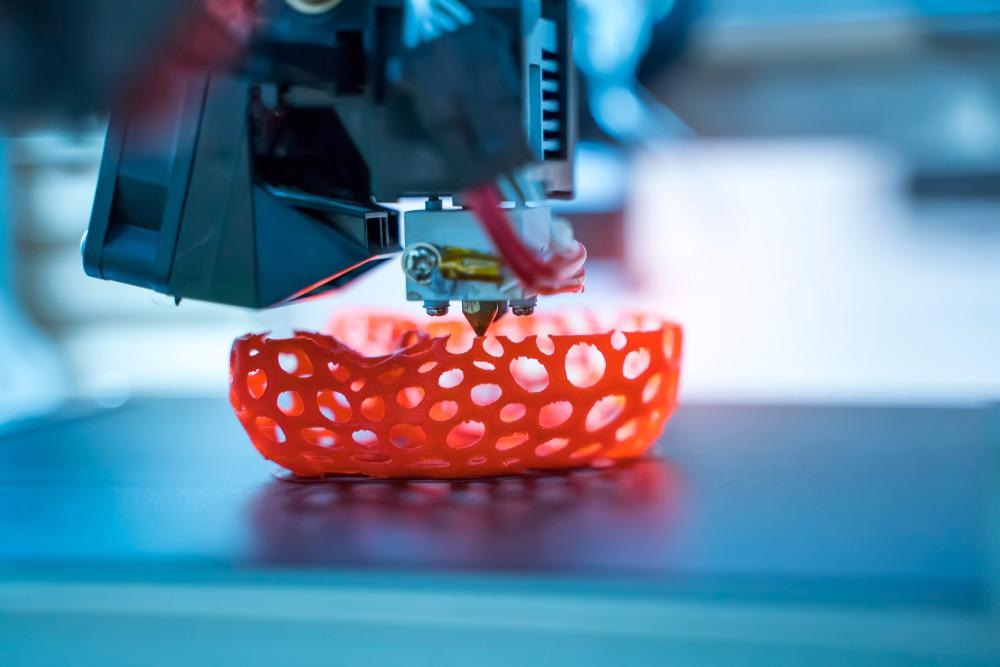3D printing for macrostructures application using TiO2 nanoparticles for arsenic removal has been explored in a new study published in the journal Science of the Total Environment.

Study: 3D printing of TiO2 nano particles containing macrostructures for As(III) removal in water. Image Credit: asharkyu/Shutterstock.com
Here, the shape and dispersion of TiO2 nanoparticles (NPs) placed on manufactured macrostructures was studied, and the influence of the 3D printing technique, TiO2 NPs doped percentage, TiO2 NP size, and the rate of adsorption and isotherms, were investigated in batch adsorption studies.
Nanomaterials Usage
Nanomaterials are an effective instrument for pharmaceutical and biotechnology sector enhancement.
Their exceptional chemical and physical capabilities have led to their use in a wide range of applications, including catalysis, energy storage, semiconductors, environmental analysis, pollution removal, and biomedicine. Nonetheless, the nanoscale size of nanomaterials has restricted their use to experimental research rather than practical applications.
Limitation in Nanomaterials
The main difficulty is to controllably adapt these nanomaterials into complex three-dimensional macroscopic structures while preserving their fundamental capabilities. Nanomaterials are often produced as aqueous solution solutions.
For direct large-scale use, they must typically be integrated into three-dimensional macrostructures. Such assembly is often the result of a multitude of connections between nanomaterials.
Arsenic Contamination in Water
Nano-sized biosorbents, for example, are a promising solution for removing arsenic pollution from an aquatic environment due to their ease of use, low cost, and high efficiency. Traditional supporting structures' basic geometry severely restricts their potential applicability in real-world water treatment.
Furthermore, present loading procedures are often unstable, and nano-sized adsorbents are still easily lost from the carriers. Cleaning the supporting materials might liberate nanomaterials that have been put on them.
Nanotechnology with 3D Printing
In recent years, 3D printing technology has evolved as an engineering approach to fabricate complex structures with exceptional size flexibility and geometric controllability. As well as the combination of nanomaterials and 3D printing has the potential to facilitate the production of multiscale objects that not only have nanomaterial characteristics and customized geometrical design, but also realize one-step deception, efficiency improvements between multiple iterations, and increased component integration.
Several studies have conducted early research in this area and have encouraging results. Graphene, nanocrystals, nanotubes, carbon nanofiber, and various nanoparticles are among the nanomaterials that have been included in the raw resources of 3D printing methods to construct functional structures for a variety of applications.
Research Process of 3D Printing with TiO2 for Removing Arsenic in Water
It is still difficult to controllably assemble nanomaterials into complex three-dimensional macroscopic formations without compromising their fundamental features. To achieve this goal, researchers utilize the benefits of 3D printing technology.
The utilization of 3D stereolithography manufactured microstructures, including TiO2 nanostructures for direct absorption removal of As or Arsenic in water, was shown as a proof-of-concept.
Initially, the shape and dispersion of TiO2 NPs placed on printed macrostructures were studied.
The influence of the 3D printing technique, TiO2 NPs doped concentration, the TiO2 NP size, and the rate of adsorption and isotherms, were then investigated in batch adsorption studies. Research also showed that 3D printed adsorption structures could be reused up to ten times and are efficient in raw arsenic-polluted groundwater samples.
The results indicate that 3D printing is a potential method for designing and fabricating tailored macrostructures endowed with particular nanomaterial characteristics and to remove arsenic more efficiently.
The Advantage of Using 3D Printing
3D printed FCCSs treated with nano-sized adsorbent materials (TiO2 NPs in this work) could be controlled and washed directly, making regeneration and reuse considerably simpler and more effective than in previous studies.
Although, as compared to the direct usage of adsorbents, any use of 3D printing to create particle-containing macrostructures will always incur greater expenditures. However, the 3D printed adsorption device can avoid adsorbent loss, enabling it to be reused more times in a cost-effective manner.
Because no post-filtration is necessary, the cost of post-processing and 3D printing resin is declining. As a consequence, the total cost will not rise and is likely to become more economically viable.
Future Research on Nanomaterials with 3D Printing
Future studies should begin investigating the morphological characteristics and types of nanoparticles suitable for printing. Focus should be placed on achieving improved nanoparticles integration into 3D printed materials and maximizing macrostructure design.
Continue reading: What Nanoparticles are Best for Additive Manufacturing and 3D Printing Applications?
Reference
Wang, D., et al. (2022). 3D printing of TiO2 nanoparticles containing macrostructures for As(III) removal in water. Science of The Total Environment. Available at: https://www.sciencedirect.com/science/article/pii/S0048969721078335?via%3Dihub
Disclaimer: The views expressed here are those of the author expressed in their private capacity and do not necessarily represent the views of AZoM.com Limited T/A AZoNetwork the owner and operator of this website. This disclaimer forms part of the Terms and conditions of use of this website.